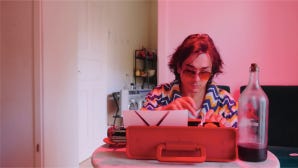Srećan Put (Happy Trails) | Cinema Year One
Srećan Put (Happy Trails) aka Fragments of a Memory of Another Film
Year one. I’ll do my best not to pretend that my new feature film is a reset on the cinema apparatus, by any means. But I will admit it as a reset of my own practice and approach to filmmaking. It is two thousand and twenty one, and amidst the endless hor…
Keep reading with a 7-day free trial
Subscribe to Cinema Year Zero to keep reading this post and get 7 days of free access to the full post archives.





